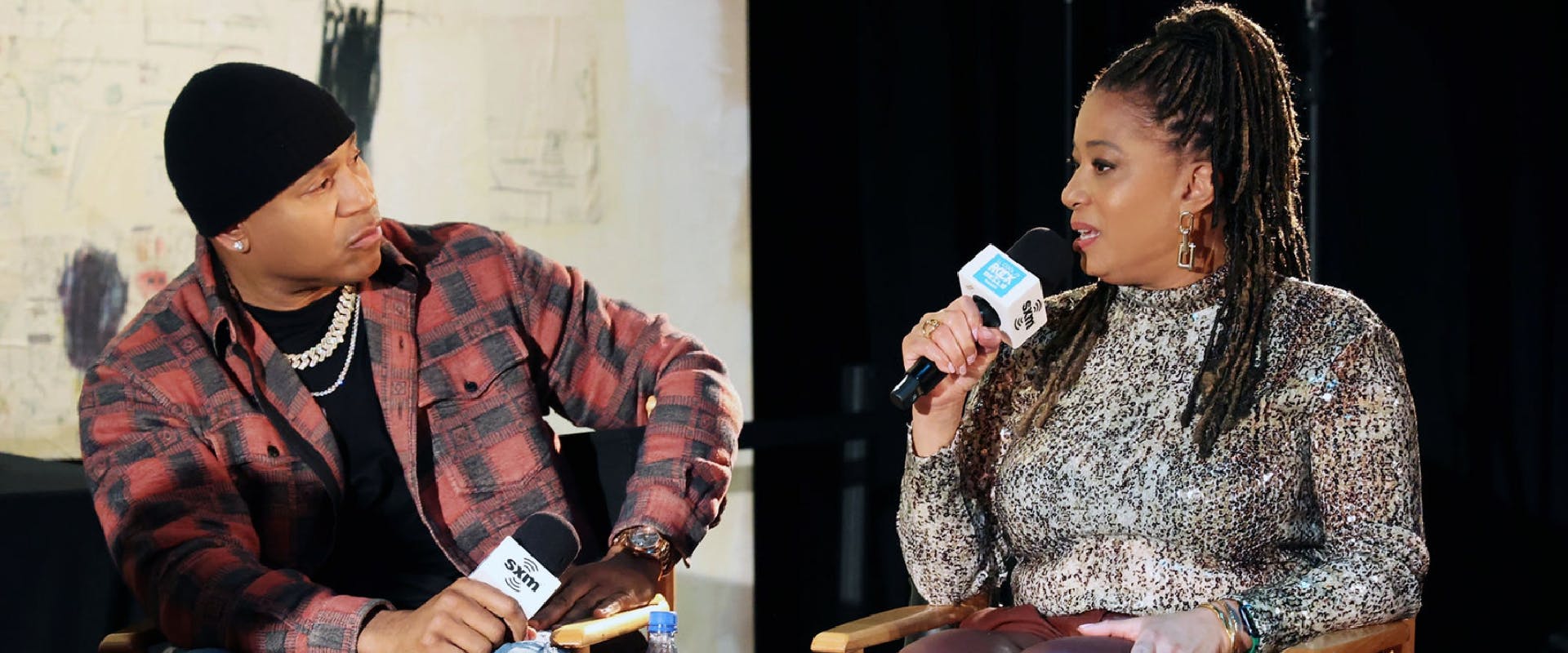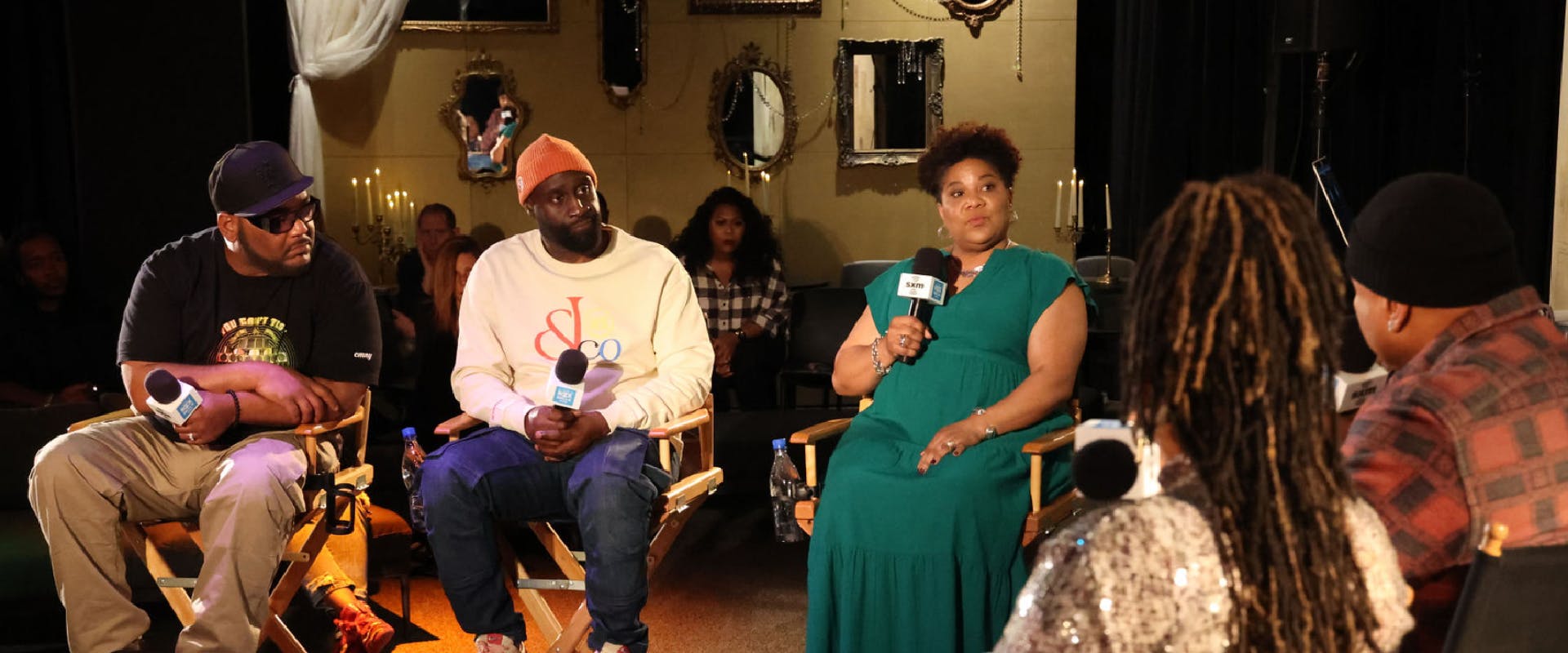

LL COOL J and Jean-Michel Basquiat's Sisters Discuss Art, Hip-Hop, and Legacy – an Intimate Conversation
LL COOL J and Jean-Michel Basquiat's Sisters Discuss Art, Hip-Hop, and Legacy – an Intimate Conversation
Published Sat, April 1, 2023 at 6:00 PM EDT
LL COOL J recently sat down at the Jean-Michel Basquiat: King Pleasure© Exhibition in DTLA inside the Michael Todd Room at the Palladium with Jeanine Heriveaux and Lisane Basquiat, the sisters of world-renowned artist, Jean-Michel Basquiat, for a special episode of Influence of Hip-Hop.
Joined by Posdnous and Maseo of De La Soul, the intimate conversation was in celebration of Hip-Hop's 50th anniversary, and the launch of the Jean-Michel Basquiat: King Pleasure© Exhibition, curated and produced by the family of Jean-Michel Basquiat. The exhibition tells the story of Jean-Michel from an intimate perspective.
One of the most lauded artists of all time, Basquiat served as a bridge between two burgeoning art forms in the 80s — Hip-Hop and Street Art. Basquiat's well-known friendship with Fab Five Freddy, one of Hip-Hop's beloved ambassadors and a Rock The Bells Icon, helped catalyze his connection with Hip-Hop music and culture.
Basquiat, known as the "patron saint," has long been a cultural marker for Hip-Hop, referenced by countless Hip-Hop artists lyrically — from Killer Mike, Jay-Z, and Rick Ross to Wale. But it's Basquiat's vision, unique perspective, and desire to help reshape the world through the impact of his art that had an indelible impact on Hip-Hop. In many ways, Hip-Hop continues to emulate Basquiat's drive and foresight. Basquiat started out as a graffiti artist — a writer— and the two art forms, Hip-Hop and visual art, are inextricably linked, both firmly rooted in storytelling and relaying truths about the Black experience.
You can feel Basquiat's influence woven into the street art that paints cities like Atlanta, Chicago, Houston, L.A., and his hometown of Brooklyn, NYC, and you can hear his artistic voice in Hip-Hop artists like Chuck D, De La Soul, J. Cole, Rapsody, and Kendrick Lamar. The new exhibition draws a unique story that's laser-focused on examining Basquiat's maverick mindset.
"Jean-Michel had a purpose," Lisane said. "He was really driven, and he felt resistance. No one really understood what it was that he had within him. And if you look around at his artwork, like, this is a lot of energy to have within yourself in a world where you have dreadlocks, and it’s the 70s and you're a Black guy, and people don't understand where you're coming from because there were no role models for him. There wasn't a Kehinde Wiley, or someone else for him to point to, where he can say, 'Oh, there's this Black man, who has done this thing.' So it was a constant challenge. He didn't say these words to me but I would offer that I think it was like, he knew it was a challenge but he was navigating it. He was figuring out how to flow through and around that challenge and to show people that what he had within him was something they truly needed and wanted to see."


Surrounded by Basquiat's transcendent work, Lisane and Jeanine explored Basquiat's initial immersion into art, his upbringing, and the influence of their father’s Haitian roots, as it mingled with their experiences growing up in the states and the racism that's interwoven into America's fabric. Jeanine explained to Pos and LL that much of the strength and "grit" Jean-Michel exhibited in his work was molded by his own experiences.
"He sensed not only the oppression that was in Haiti but also his own experiences that he had here growing up and being a Black man, walking through the streets, not being able to catch a cab, feeling as though anyone was not understanding him because of the way he wore his hair, all of those things," she contended. "So he lived with it daily until he passed."
Lisane remembers Jean-Michel’s venture into the art world as being a natural extension of what he had been doing in their household.
"I wasn't surprised by Jean-Michel, what he chose to do because we were always so creative in the household. So it was just like, he was just going off and doing that thing that he was so good at doing," she said. "And as a child, I'm watching him do it, but it wasn't, I wasn't thinking about career or profession. I was thinking more about, 'Oh, he's doing the thing that he's been doing.'"
In the end, Jean-Michel's impact is most felt in the passion he exuded in his work. When you look at his art, you feel.
"I love the authenticity of Jean Michel's voice," Lisane said. "I love the color, I love how bold his work is and I love how unapologetic his expression is. He's like, I'm an artist. And it's not like, I'm a painter or I'm a poet or I'm a producer of music. It's like, I'm going to express and I'm going to express freely and I'm going to express however I want to. And that's what I love."
Catch the premiere live on Rock The Bells TV at 7 pm ET/4 pm PT.




